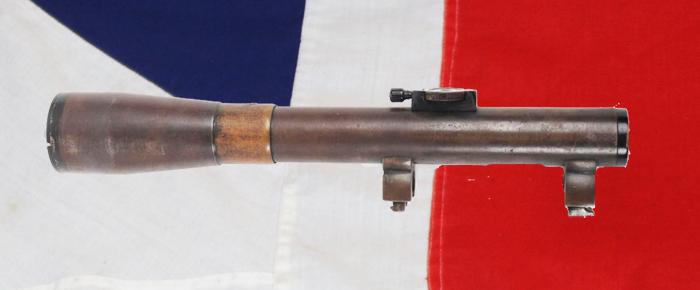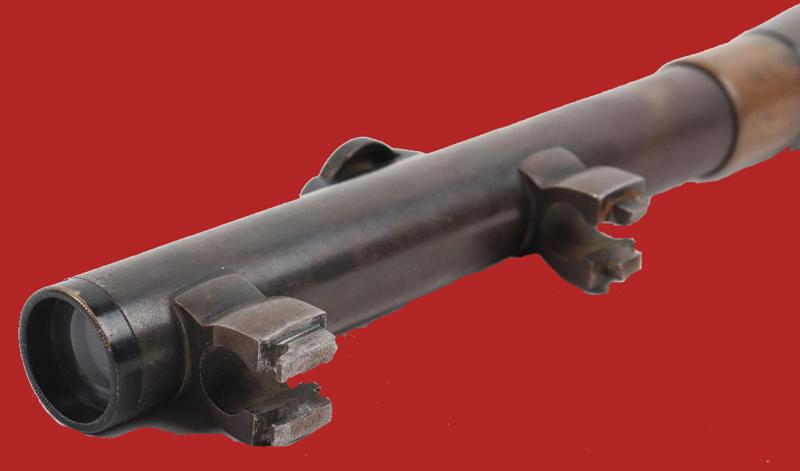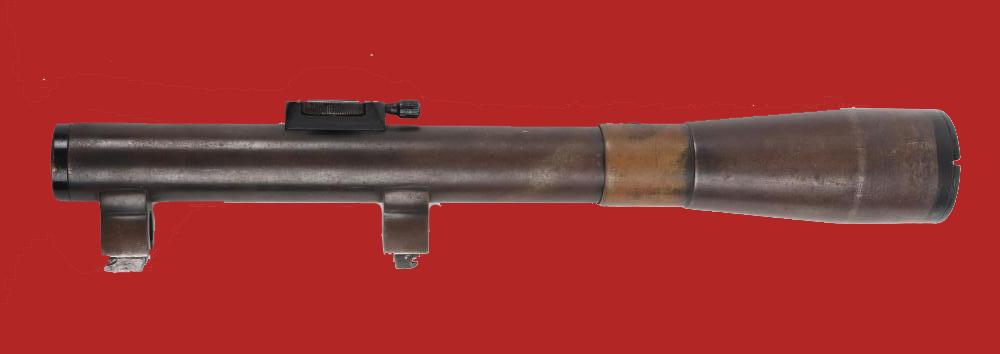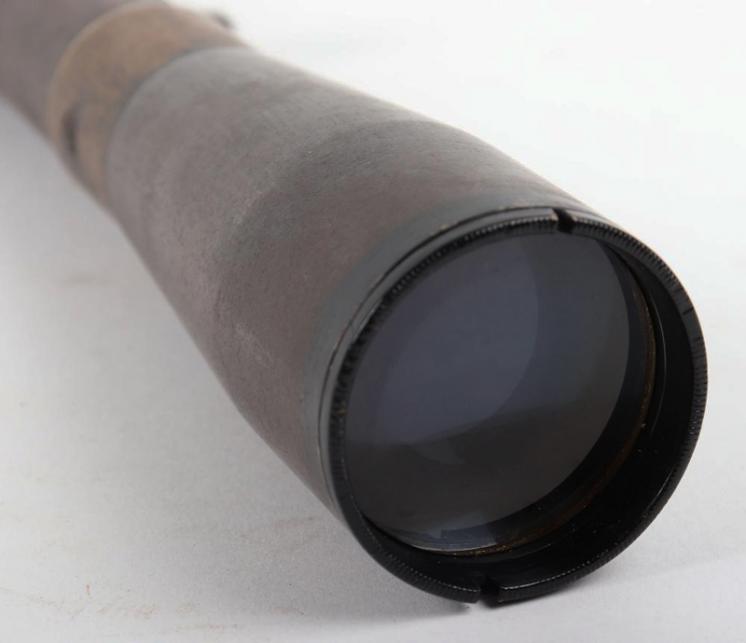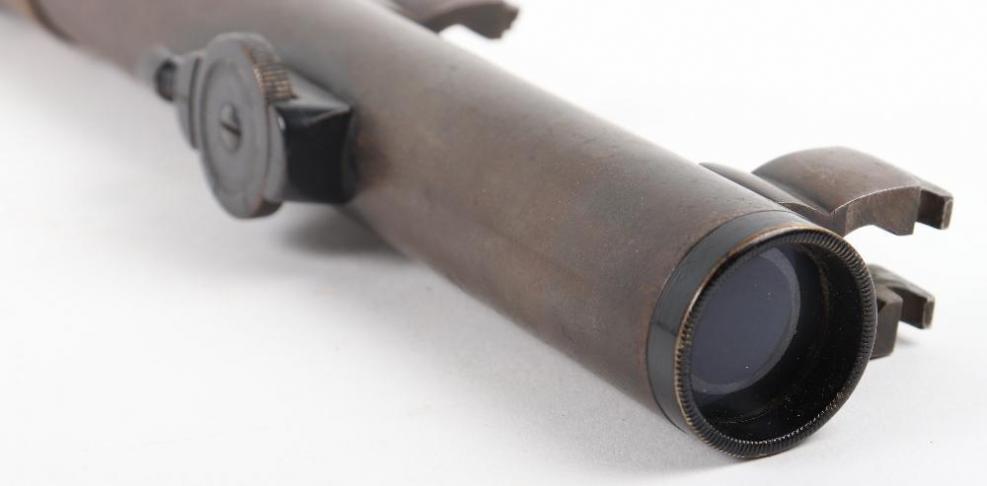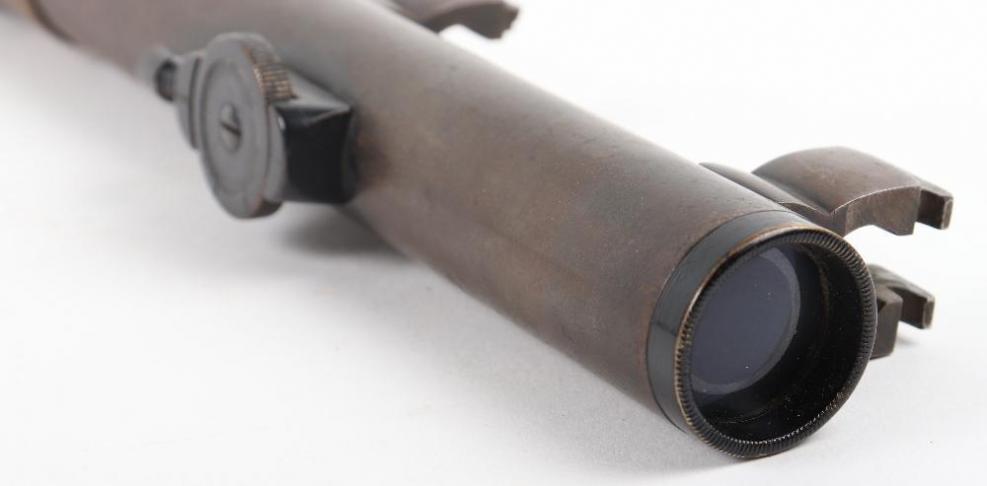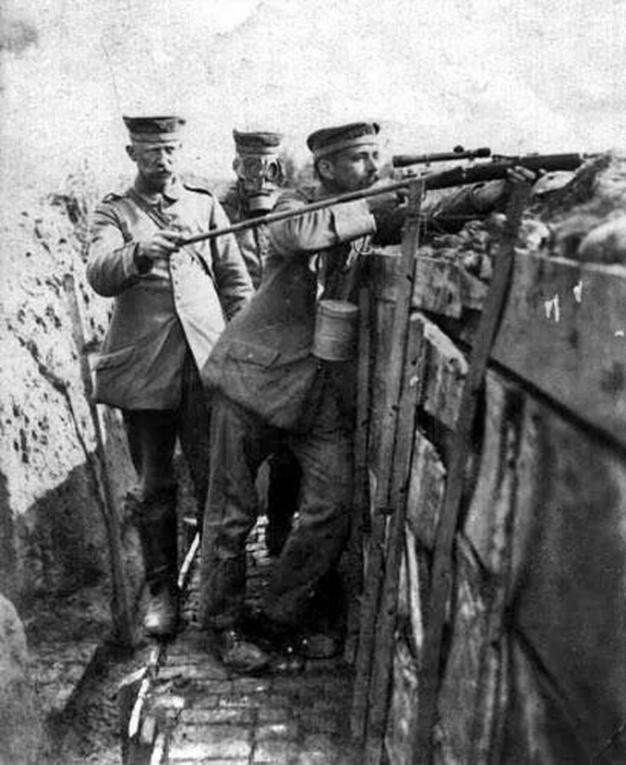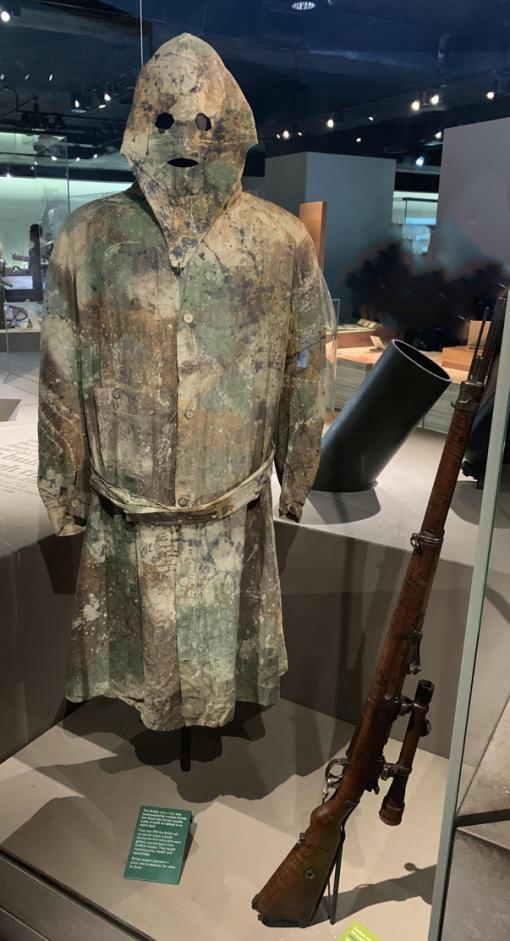A Rare and Very Fine WW1 German Sniper's Scharfschutzengewehr Optical Scope. Some Of The Best & Most Desirable Sniper Scopes Are 20th Century Fine German Examples Such As This
WW1 German Sniper Optical Scope, steel body scope with bracket fittings to the lower section. Top focusing mount is maker marked “Rudiger & Bischoff Braunschweig”. Remains of the blued finish. Optics remain clear. Photo in the gallery of German snipers in WW1 and a cabinet of original snipers kit, including the rifle and sniper site, in the Imperial War Museum. During World War I, snipers appeared as deadly sharpshooters in the trenches. At the start of the war, only Imperial Germany had troops that were issued scoped sniper rifles. Although sharpshooters existed on all sides, the Germans specially equipped some of their soldiers with scoped rifles that could pick off enemy soldiers showing their heads out of their trench. At first the French and British believed such hits to be coincidental hits, until the German scoped rifles were discovered. During World War I, the German army received a reputation for the deadliness and efficiency of its snipers, partly because of the high-quality lenses that German industry could manufacture.
During the First World War, the static movement of trench warfare and a need for protection from snipers created a requirement for loopholes both for discharging firearms and for observation. Often a steel plate was used with a "key hole", which had a rotating piece to cover the loophole when not in use.Imperial German Scharfschutzengewehr (Sharpshooters rifle in German) Model 1898 sniper rifle in 7.92x57 or more commonly known as 8mm Mauser. At the beginning of World War 1 no country had a "sniper program" as we know it today. Germany in 1915 outfitted the most experienced marksmen (typically pre-war game wardens and poachers) with specially selected factory rifles and equiped them with optical hunting sights. These early telescopic sights usually consisted of 2.5x, 3x and 4x power, produced by manufactures like Görtz, Gérard, Oige, Zeiss, Hensoldt, Voigtländer Rudiger & Bischoff and various civilian models from manufacturers like Bock, Busch and Füss. These rifles were standard 1898 Military Model which held exceptionaly high accuracy at the factory. They were fitted with a Model 1898AZ carbine bolt and optic and issued to an individual Soldier (Soldat) instead of a unit. Due to the very high usage of steel armor piercing ammunition the barrels were rapidly erroded and the life span for accuracy was between 1000-2500 rounds, often less, before having to be replaced. Soon the British army began to train their own snipers in specialized sniper schools. Major Hesketh Hesketh-Prichard was given formal permission to begin sniper training in 1915, and founded the First Army School of Sniping, Observation, and Scouting at Linghem in France in 1916. Starting with a first class of only six, in time he was able to lecture to large numbers of soldiers from different Allied nations, proudly proclaiming in a letter that his school was turning out snipers at three times the rate of any such other school in the world.
He also devised a metal-armoured double loophole that would protect the sniper observer from enemy fire. The front loophole was fixed, but the rear was housed in a metal shutter sliding in grooves. Only when the two loopholes were lined up—a one-to-twenty chance—could an enemy shoot between them. Another innovation was the use of a dummy head to find the location of an enemy sniper. The papier-mâché figures were painted to resemble soldiers to draw sniper fire. Some were equipped with rubber surgical tubing so the dummy could "smoke" a cigarette and thus appear realistic. Holes punched in the dummy by enemy sniper bullets then could be used for triangulation purposes to determine the position of the enemy sniper, who could then be attacked with artillery fire. He developed many of the modern techniques in sniping, including the use of spotting scopes and working in pairs, and using Kim's Game to train observational skills. An original complete Imperial German Scharfschutzengewehr (Sharpshooters rifle in German) Model 1898 GEW98 rifle, with its scope, just as this one, can now fetch over $11,000.
Code: 23342
1195.00 GBP

